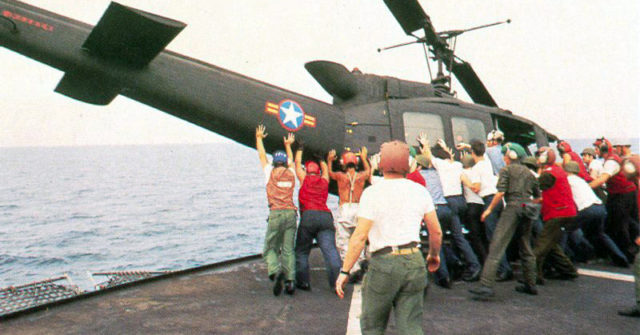During the operation, 1,373 Americans and 5,595 citizens of Vietnam and other countries were evacuated with the help of helicopters.
On April 29, 1975, a CIA helicopter from Air America landed very carefully on the roof of a house in Saigon. On the roof were many South Vietnamese citizens, who were eager to climb aboard. People knew that about 150,000 soldiers from North Vietnam were approaching the city, ready to strike.
When the helicopter cabin, designed for nine people, was finally filled with 15 passengers, the pilot took off slowly. After about 40 minutes, the evacuees landed safely on the deck of an American warship.
Now imagine that helicopter pilots had to carry out such a run repeatedly without sleep and almost without food. It was a serious burden. However, that was how Operation Frequent Wind was carried out. It was the largest operation in history to transport people by helicopters.
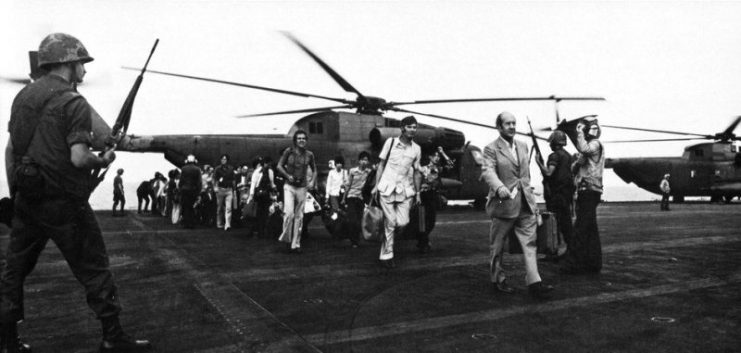
By the end of the operation, CH-46 and CH-53 helicopters from Air America and the Marine Corps had evacuated approximately 7,000 Americans and South Vietnamese. The operation took place from April 29 to April 30, 1975.
The reason for the operation was the harsh reality and forced circumstances. By the end of April 1975, two years had passed since the American troops were withdrawn and the ceasefire agreement was signed with the North.
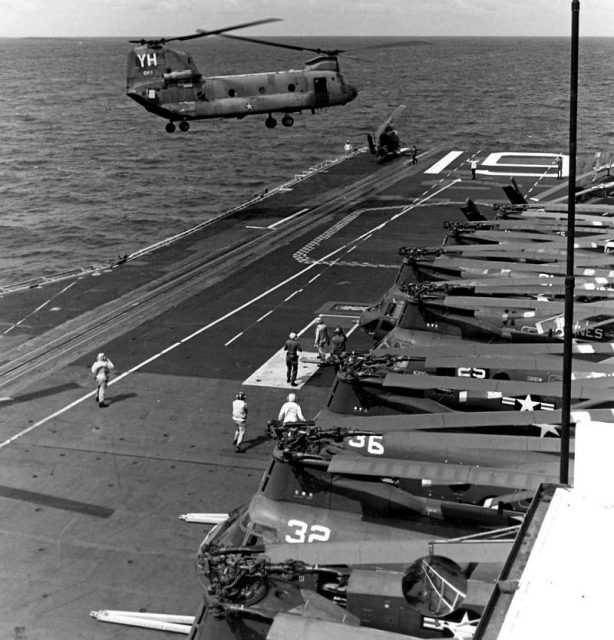
However, chaos reigned in Saigon where people were afraid of mass arrests, imprisonment in re-education camps, and executions by the communists. Thousands of Americans and Vietnamese thought about how to make a safe escape.
https://youtu.be/-LwPOi2kvKE
The evacuation operation by helicopters was initiated by a North Vietnamese attack on the airport in Saigon. Because of rocket and artillery strikes, the runways were damaged and mass evacuation by airplane was impossible.
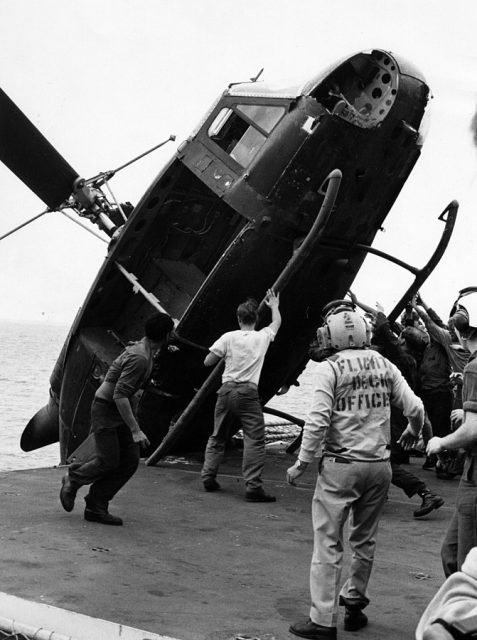
Instead, the organizers of the operation planned to evacuate people using helicopters that were smaller and slower. However, according to pilots, the use of helicopters in this situation was undesirable and very dangerous.
The US authorities had to resolve some difficult issues quickly. It was necessary to decide who should be allowed to leave the country, when they could leave, and how to conduct a mass evacuation. No one knew how it would turn out, and the world watched in anticipation.
To support the evacuation, Air America allocated 24 of its 28 available helicopters, and 31 pilots agreed to stay in Saigon. However, this meant that most helicopters would have only one pilot.
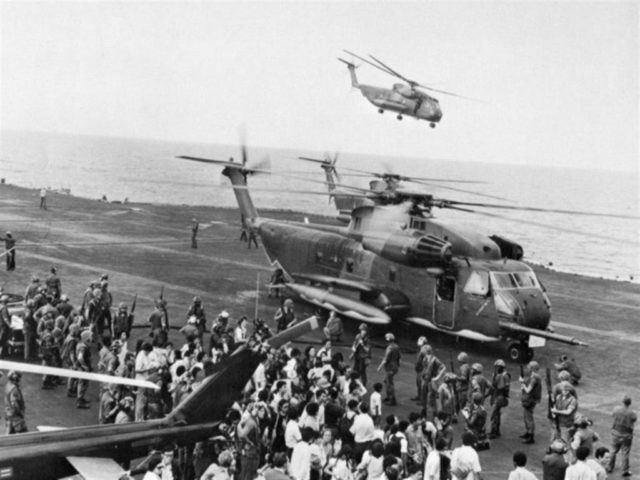
In preparation for the evacuation, the US embassy distributed a 15-page brochure called Standard Instruction and Advice to Civilians in an Emergency, abbreviated to “SAFE.” The booklet also had a map of Saigon with an indication of the collection area.
On one of the pages it stated: “Note evacuational signal. Do not disclose to other personnel. When the evacuation is ordered, the code will be read out on Armed Forces Radio. The code is: The temperature in Saigon is 105 degrees and rising. This will be followed by the playing of I’m Dreaming of a White Christmas.”
After the signal sounded on the radio on the morning of April 29, people moved to the designated gathering places. So began Operation Frequent Wind.
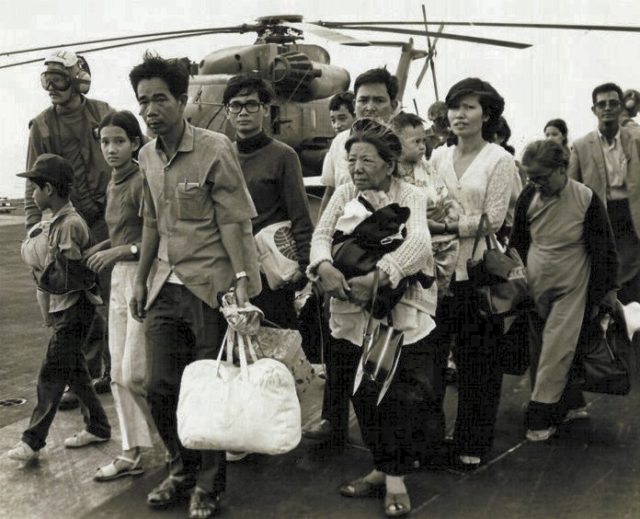
During the operation, 1,373 Americans and 5,595 citizens of Vietnam and other countries were evacuated with the help of helicopters. The total number of Vietnamese who were evacuated either by air or independently but who ended up under the protection of the United States amounted to 138,869 people.
During the Frequent Wind operation, Marine corporals McMahon and Judge were killed in the territory of the DAO. They were the last ground casualties from the United States in Vietnam.
One of the most interesting events occurred after the pilot of a VNAF Cessna O-1 threw a note on the deck of an aircraft carrier. The note read: “Can you move these helicopter to the other side, I can land on your runway, I can fly 1 hour more, we have enough time to move. Please rescue me. Major Buang, Wife and 5 child.”
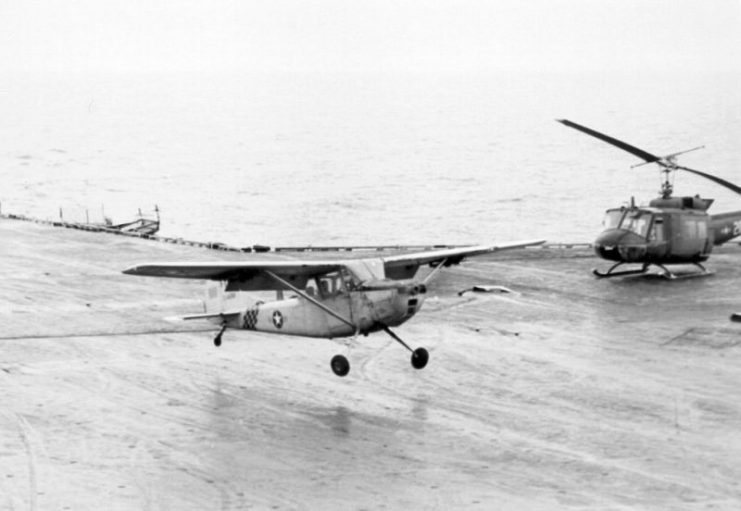
Midway’s commanding officer, Captain L.C. Chambers, ordered the crew to drop UH-1 Huey helicopters worth about $10 million overboard to clear the deck. As soon as this happened, Major Buang made a successful landing, becoming the first VNAF pilot to land on a carrier.
At the same time as the aerial evacuation, tens of thousands of South Vietnamese fled on sampans, small ships, and junks. The tugs pulled barges filled with people from the port of Saigon to the TF-76. On April 30, the TF-76 took the refugees away from the coast.
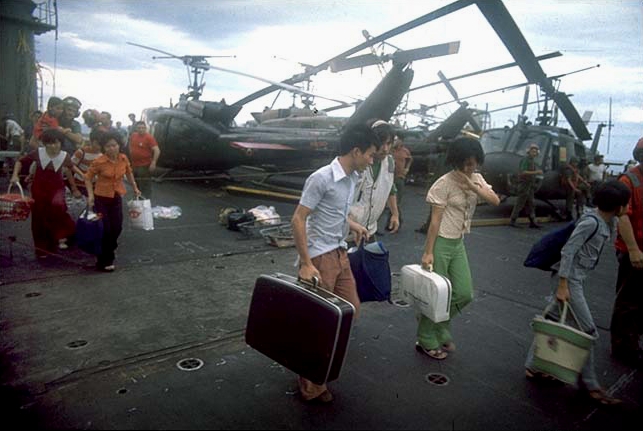
On May 2, Task Force 76, the RVN Navy group, and 44,000 evacuees went to reception centers in Guam and the Philippines.
Read another story from us: Screaming Eagles: Exploits of the 101st Airborne
Despite the success of the Frequent Wind operation, in the USA it became a symbol of the sad outcome of the Vietnam War. President Ford argued “you couldn’t help but be very proud of those pilots and others who were conducting the evacuation,” but at the same time called it “a sad and tragic period in America’s history.”
In Soviet and some Russian publications, television shots of the evacuation of Saigon were used for propaganda purposes, claiming Americans were fleeing from Vietnam.
